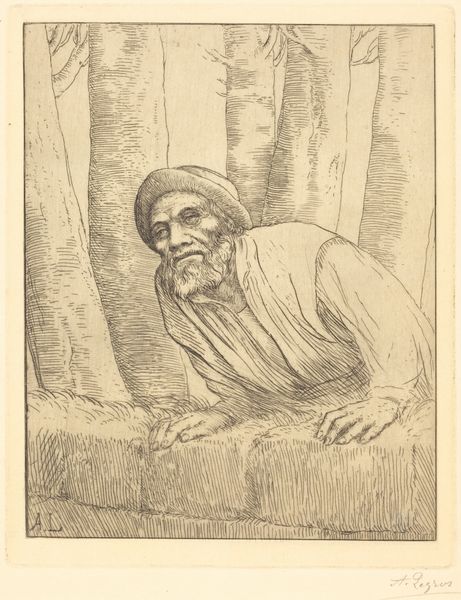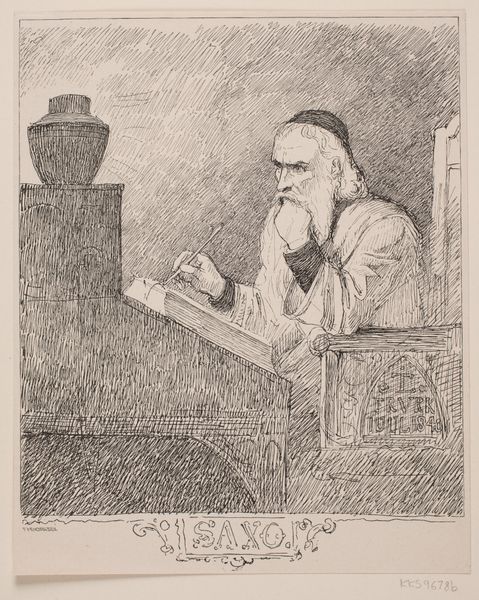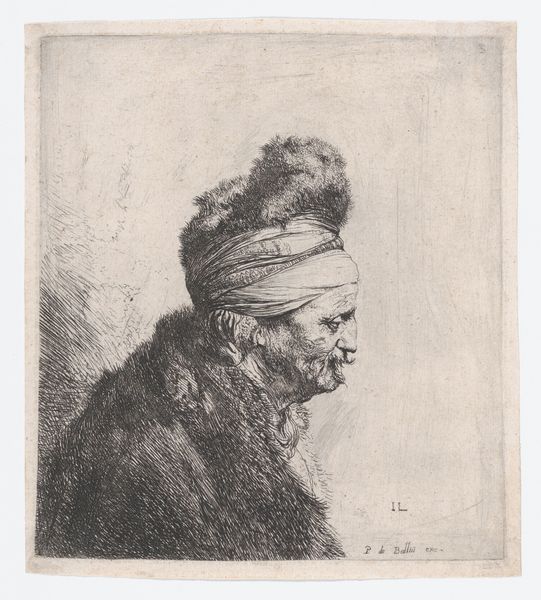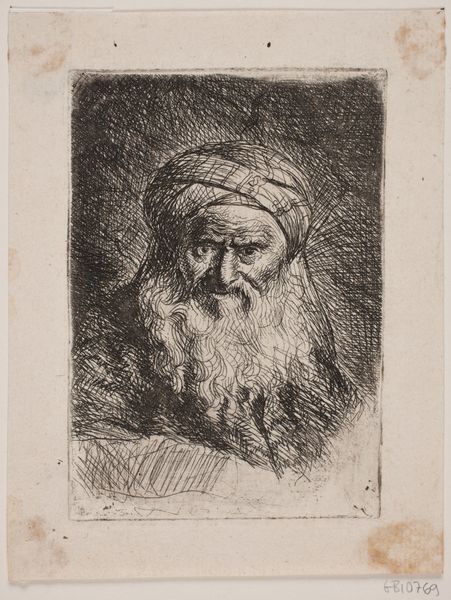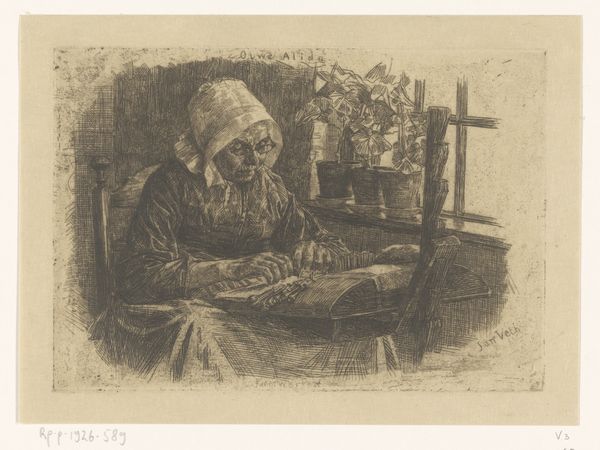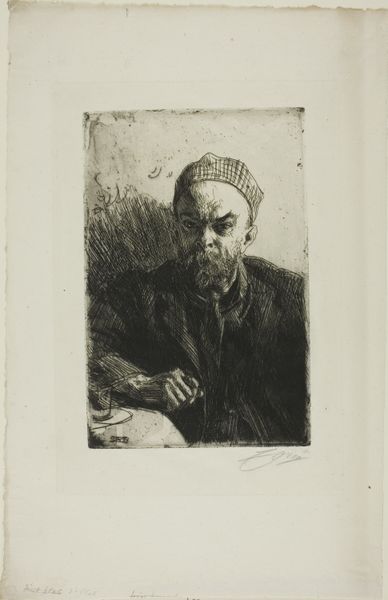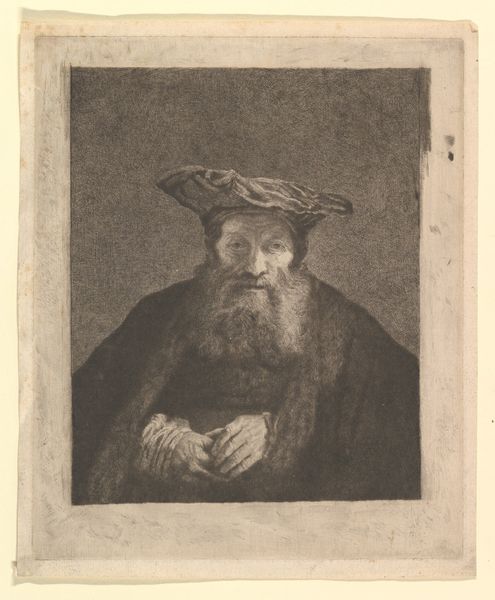
print, etching
#
portrait
# print
#
etching
#
figuration
#
genre-painting
#
history-painting
Dimensions: height 122 mm, width 105 mm
Copyright: Rijks Museum: Open Domain
This small etching was made by Jan Chalon in the late eighteenth century and shows a man with a turban behind a writing table. The image is a network of tiny, precise marks incised into a metal plate, which was then inked and pressed onto paper. It’s a labor-intensive process, demanding great skill, and its effects are all about the control of light and shadow. Notice how the fine, dark lines mass together to create a sense of depth and volume, particularly in the drapery behind the figure, and the deep folds of his turban. The choice of etching as a medium also has social implications. It was a relatively accessible form of printmaking, allowing for the wider dissemination of images in an era before photography. By using this method, Chalon was participating in a broader culture of knowledge sharing, reflecting the Enlightenment ideals of his time. So, when you look at this etching, consider not just the image it portrays, but also the hands that crafted it and the world of ideas in which it was made.
Comments
No comments
Be the first to comment and join the conversation on the ultimate creative platform.
